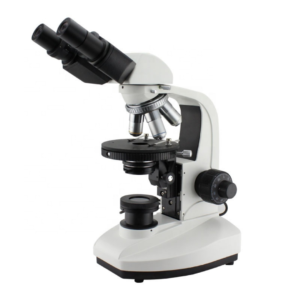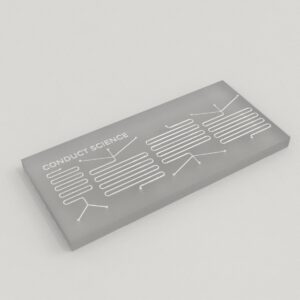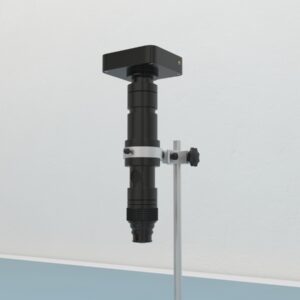$36,750.00
The RD-3000A is a compact, benchtop system that integrates both staining and coverslipping modules into a single unit. It is engineered for precision, using a robotic arm to handle up to 60 slides per run. The system features a customizable staining protocol that accommodates a wide range of reagents and applications, from routine H&E staining to more specialized immunohistochemical procedures. The coverslipping module uses a unique sealing method to ensure bubble-free slides with a uniform adhesive layer, providing superior optical clarity and long-term sample preservation. The user-friendly interface allows for easy protocol setup and real-time monitoring of the process, ensuring consistent and reproducible results.
ConductScience offers Automatic Staining and Coverslipping Machine

Conduct Science is a premier manufacturer of research infrastructure, born from a mission to standardize the laboratory ecosystem. We combine industrial-grade precision with a scientist-led tech-transfer model, ensuring that every instrument we build solves a real-world experimental challenge. We replace "home-brew" setups with validated tools ranging from microsurgical suites to pathology systems. With a track record of >1,600 institutional partners and hundreds of citations, our equipment is engineered to minimize human error. We help you secure more data for less of your budget, delivering the reliability required for high-impact publication.

bool(false)


bool(false)
Model | Coverslipping Workstation RD-3000A |
|---|---|
Slide capacity of Slide | 6 layers, 20 per layer, a total of 120 |
Slide Specifications | 26*75mm |
Cover Slide Specifications | 24*(50±10) mm |
Dimensions | 849*733*651(L*W*H) |

The Fully Automated Coverslipping Workstation RD-3000A is a state-of-the-art solution designed for high-throughput histopathology laboratories. This advanced system automates the entire process of slide staining and coverslipping, eliminating manual intervention and significantly reducing processing time. By ensuring consistent and precise application of coverslips, the RD-3000A enhances the quality of prepared slides, making it an essential tool for research and clinical diagnostics where accuracy and efficiency are paramount. This workstation integrates seamlessly into existing laboratory workflows, providing a reliable and cost-effective solution to meet the demands of modern scientific research.
The principle of the RD-3000A is based on a precision-controlled, multi-step automated process. Slides are loaded into the system, where a robotic arm transfers them to the staining module. Here, a series of automated reagent applications, rinses, and dehydration steps are performed according to the selected protocol. Following the staining process, the slides are automatically moved to the coverslipping module. A drop of mounting medium is dispensed, and a coverslip is precisely applied using a controlled pressure mechanism to prevent air bubbles. The system ensures each step is performed under standardized conditions, minimizing variability and human error, which is crucial for obtaining high-quality and reproducible histological slides.
Slide Preparation: Load up to 60 stained or unstained slides into the designated slide rack.
Protocol Selection: Using the intuitive touchscreen interface, select a predefined or custom staining and coverslipping protocol.
Start Run: Initiate the automated cycle. The system will begin by staining the slides according to the specified protocol.
Coverslipping: Once staining is complete, the slides are automatically transferred to the coverslipping module for the final sealing process.
Output: Retrieve the fully prepared, coverslipped slides from the output tray. The slides are ready for immediate microscopic examination.
Strengths:
High-Throughput: Processes up to 60 slides per run, significantly increasing lab efficiency.
Reproducibility: Eliminates manual variability, ensuring consistent staining and coverslipping across all slides.
Ease of Use: User-friendly software and a simple protocol setup reduce the learning curve.
Safety: Minimizes exposure to hazardous chemical reagents for laboratory personnel.
Limitations:
Initial Cost: The initial investment may be higher compared to manual methods.
Size: Requires dedicated benchtop space, which may be a consideration for smaller labs.
Maintenance: Routine maintenance and calibration are required to ensure optimal performance.
The Fully Automated Coverslipping Workstation RD-3000A provides a complete solution for modern histology labs looking to optimize their workflow.
Streamlined Workflow: Automates the critical steps of staining and coverslipping, significantly increasing laboratory efficiency and reducing manual labor.
High-Quality Results: Ensures consistent and reproducible slide preparation, minimizing human error and producing high-quality slides for reliable analysis.
Increased Throughput: Processes up to 60 slides per run, making it an invaluable asset for high-volume labs and accelerating research or diagnostic workflows.
Cost-Effective Solution: Serves as a long-term investment by improving lab productivity, standardizing protocols, and allowing personnel to focus on data analysis rather than tedious manual tasks.
Ahmed, M. M. I. E., et al. (2018). Evaluation of a fully automated staining and coverslipping system for immunohistochemistry. Pathology – Research and Practice, 214(1), 1-7.
Boon, M. E., et al. (2007). Automated coverslipping of histology slides: a comparison with manual methods. Journal of Clinical Pathology, 60(9), 1018-1021.
Pantanowitz, L., et al. (2014). Anatomic pathology automation: a comprehensive review. Journal of Pathology Informatics, 5(1), 1-13.
van Tilburg, R. C. L. P., et al. (2013). Automated coverslipping: The next step in standardization of immunohistochemical staining. Applied Immunohistochemistry & Molecular Morphology, 21(5), 361-365.
| Weight | 6.61 lbs |
|---|---|
| Dimensions | 34 × 25 × 20 cm |
| Model | Standard, Profesional, Advanced |
You must be logged in to post a review.
There are no questions yet. Be the first to ask a question about this product.
Reviews
There are no reviews yet.